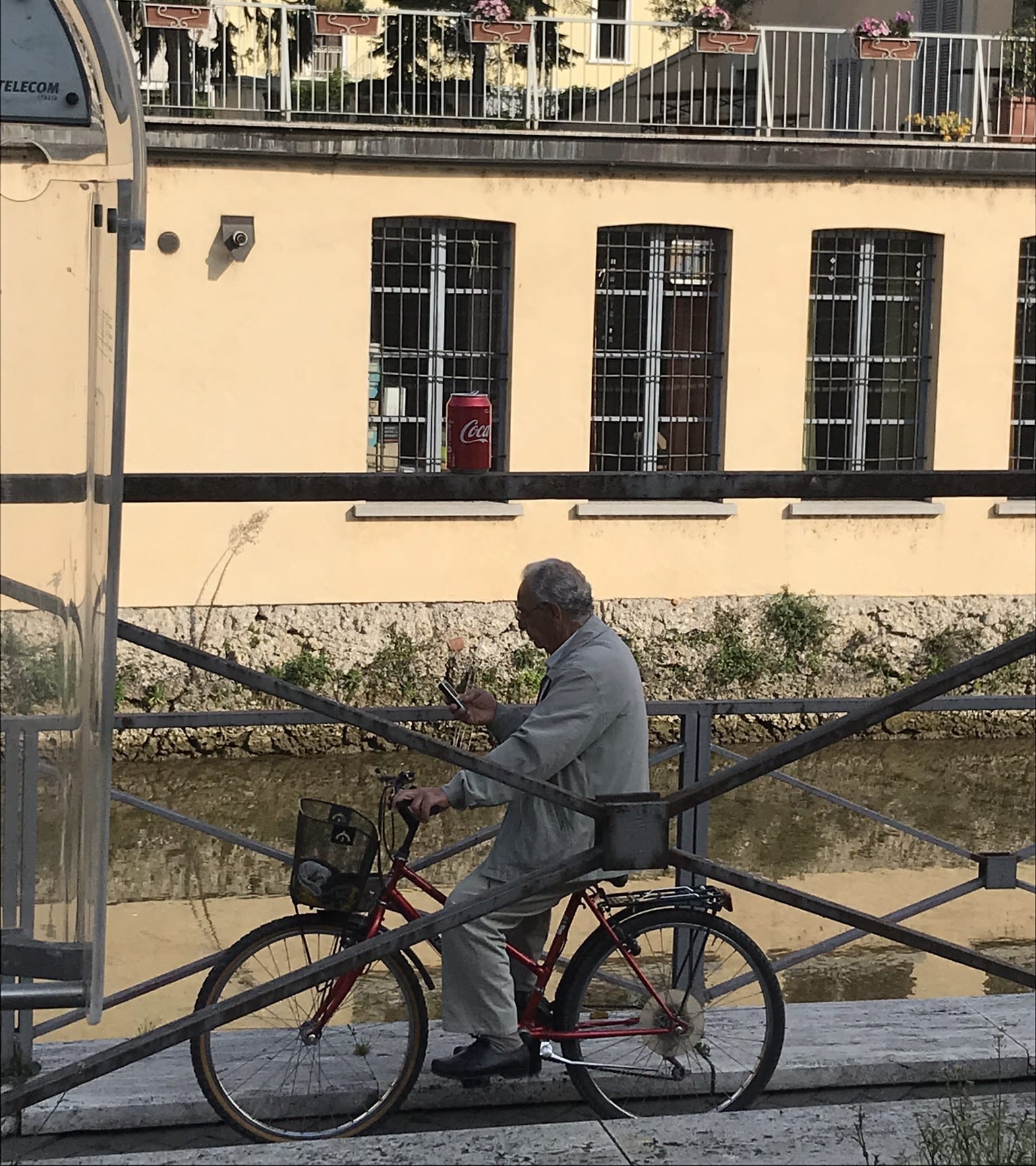Milano Smart City: from above, below, and beyond
By Shireen Walton, on 20 December 2019
The last decade has witnessed the rise of the Smart City. Smart Cities, as they are broadly conceived, encapsulate the increasing embedding of technology into the urban infrastructures of cities across the globe[i]. The smart city concept can best be understood as a constellation of features and potentials made up of big data, algorithmic governance and automated urban management[ii], as well as citizens’ active engagements with technologies beyond mere ‘networked urbanism[iii]’. Certain strands of scholarship on smart cities has claimed that the smart city represents a ‘techno-utopian fantasy’, bringing together neoliberal urban visions directed at economic growth and prosperity and efficient and equitable urban governance. Strands of this scholarship have highlighted the acute contradictions of smart urbanism, including its very different expressions across global North and South and digital divides[iv]. Scholars working in human, urban and social geography have been particularly influential in understanding smart cities by exploring how people actually respond to new tech, amidst the wider context of big data and the digital/wider infrastructures that underpin the way cities are run and managed, as well as the kinds of social and spatial patterns that these systems produce[v].
The city of Milan has been widely recognised as a leading innovator of urban smartness. Roberta Cocco, Councillor for Digital Transformation and Civic Services of the Municipality, suggests that Milan’s leading position in Italy on the technology front comprised of four pillars:
1) digital infrastructure (preparing the ground for transformation, including Wi-Fi, 5G and broadband),
2) digital services for citizens (to assist in public administration and bureaucracy),
3) digital education (to support citizens’ digital literacy in order to access digital services),
4) digital skills (promoting within the municipality and cross-sector partners to boost employment and careers)[vi].
Cocco views Milan as a ‘model of experimentation’ in technological urban innovation, echoing a consensus within the municipality that other Italian cities will follow suit.
For example, through the first Milan Digital Week in 2018[vii], the city has been publicising itself as a leading smart city, hosting numerous international events, (Figure 2), and symposiums [viii].

Figure 2: Three core focus areas at the 2019 Milano Smart City Conference, 13-15 November: https://www.smartbuildingitalia.it/en/smart-city-conference/
Milan’s status as a leading smart city was evident in its winning the inaugural Wellbeing Cities Award[ix], having implemented 16 new projects that claim to promote wellbeing for the city and its communities. These range from art and education initiatives to the regeneration of particular areas of the city.
Ethnographic research conducted on the ground and online provides an opportunity to challenge this top down agenda. For example, Katrien Pype’s ethnographic research in Kinshasa, the largest and capital city in the Democratic Republic of the Congo, counters this with a perspective from the ground up, examining how residents engage with technology, combining their own expertise and creativity to produce variegated ways of “being smart in the city”. Pype asks:
‘Who is smart? And who is not? How does mastery over entering technologies relate to local repertoires of authority, power, and prestige?”[x]
In my Milan research I have tried to explore processes of ‘smartness’ from above and below, and their inter-relatedness, with a specific focus on the response of middle and older age adults.
Routine practices in the culturally diverse neighbourhood I carried out research in included googling for health, navigating the city via geolocative maps and free WiFi zones in public space and institutions such as libraries, arranging community events, or engaging in daily WhatsApp communications.
My research shows how the use of smart city services is contingent upon socio-economic circumstances, accessibility of roaming data, WiFi, and connection speeds, and how people respond to technology in their lives. At the same time, the concept itself continues to be being challenged, as seen in the following student protest slogans in Milan during labour day protests in 2019:

Figure 4: Student protest slogan on Labour Day, May 1 2019, Milan: ‘We strike the Smart City and Bikes’. Photo (CC BY) Shireen Walton
Understanding the smart city speaks to the heart of our project and its commitment to examining the meaning of the term ‘smart’ by explaining and understanding more broadly what ‘smartness’ is, and is becoming – and for whom – in the city and beyond.
 Close
Close






 Luchino Visconti, a pioneer of the socially conscious Italian Neorealist cinema of the post-war period, shows how migrants and their families from the south faced significant social challenges in adjusting to the different experience and pace of urban, industrial life in the north – alongside the pain and nostalgia of missing or losing one’s home.
Luchino Visconti, a pioneer of the socially conscious Italian Neorealist cinema of the post-war period, shows how migrants and their families from the south faced significant social challenges in adjusting to the different experience and pace of urban, industrial life in the north – alongside the pain and nostalgia of missing or losing one’s home.




